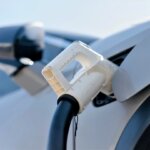Lasers solve tech recycling puzzle in a flash

|
Getting your Trinity Audio player ready...
|
Ideally, it’s best to reuse, repurpose, or re-engineer devices to save on the burden of manufacturing – the biggest contribution to IT’s carbon footprint. And tech recycling is the final slingshot that puts valuable materials back into the circular electronics economy.
In principle, rather than starting from scratch, it should be much easier and less energy-intensive to utilize the constituents of waste electronics as feedstock for brand new devices. But that’s only cost-effective if materials types can be readily identified to enable efficient sorting.
Tech recycling wish-list
And for tech recycling, that means coming up with a fast and automatic method capable of accurately classifying materials into top-level bins such as glass, paper, plastic, wood, textiles, and metal. Plus, the solution needs to dive deeper and be able to subclassify those materials into their specific types – for example, by identifying plastics as polyvinylchloride, polyoxymethylene, acrylonitrile-butadiene-styrene, polyamide, polyethylene, and polytetrafluoroethylene.
Even in modern facilities, many steps supporting the circular electronics economy remain manual tasks. And fundamentally, that’s down to the design of popular gadgets such as mobiles and laptops. There are some exceptions – one example is Fairphone’s range of smartphones, which has consistently scored highly for repairability thanks to a modular design philosophy.
The European Commission is certainly making its position clear to appliance firms with its Ecodesign Directive, which builds a regulative framework for more environmentally sustainable and circular products. US lawmakers are also calling for manufacturers to produce hardware that’s easier to repair and disassemble. And while that may help in the future, goods entering tech recycling facilities today often need to be puzzled over by dexterous workers to salvage parts.
But it’s an activity that’s worthwhile, both for the planet and financially. For example, even if a laptop can’t be reused intact, parts harvesting can yield a workable screen, memory, keyboard, and other components. And if you are shopping for parts, sites like Ebay can be a goldmine for reclaimed tech put on sale by IT asset disposition (ITAD) providers.
Firms submitting IT hardware for reuse and repurposing should look for industry certification such as R2V3. Tech recycling standards mandate that ITAD providers pay particular attention to data wiping, to avoid sensitive information being inadvertently sold to purchasers of used HDDs and other non-volatile memory.
How to sort materials for recycling?
Unwanted devices will arrive at electronics recycling facilities by truck, and equipment is first unloaded and then sent either for reuse or recycling. Workers on the recycled materials stream need to be on the lookout for hazardous materials – for example, toner can explode when processed and ignite plastics – to keep everything running smoothly.
Giant industrial shredders gobble up molded plastics and metallic parts and are separated using a variety of techniques. Magnets are an attractive option for removing steel, and applying an electrostatic charge can help to sort aluminum from plastic. But fine-grained separation soon becomes more complex.
What we do 😎#recycling #laptops #computing #gadgets #create #opportunities #community #inclusion #Online #volunteers #charity pic.twitter.com/8wgkgTCW1N
— Free I.T. Stafford (@freeITstafford) July 24, 2023
And the problem here is that the value of materials produced by tech recyclers is linked to the purity of those output streams. Simple classification methods are limited to detecting just a few categories of waste. But optical techniques such as image processing and spectroscopic approaches widen the range of recycled materials that can be correctly identified.
However, issues remain. Image-based waste classification methods are sensitive to background lighting, camera angles, geometry, and color. Staining can also influence how materials reflect light and disrupt certain kinds of spectroscopic measurements. But researchers in China may have found a winning approach that uses laser-induced breakdown spectroscopy (LIBS) to identify and classify recyclable waste.
“This method has accurate, reliable, fast detection results, and can achieve automatic detection,” comments Lei Yang, who’s based at Hefei University of Technology and is lead author of the study. The team’s setup uses a 1064 nm pulsed Nd: YAG laser to etch a tiny cloud of material from a target site, and light interacting with the sample is collected by a fiber-coupled lens that transmits the optical signal to a spectrometer for analysis.
Different materials will have different spectra and the group uses machine learning data treatments to remove noise and redundant information. Several laser blasts are fired at the same spot before the measurement is made to make sure that the reading corresponds to the underlying core material and isn’t corrupted by surface contaminants or coatings.
One of the big advantages of the LIBS approach for tech recycling and broadening the reuse of materials is that classification measurements don’t require any preprocessing of the waste being analyzed. And the researchers believe that the technique represents a crucial step towards improved waste management.
To maximize performance, the group used machine learning algorithms to analyze the spectral data. And random forest was found to be the most accurate classification model – an ensemble approach that combines the prediction of multiple decision trees. Using the random forest algorithm together with complementary statistical methods, the pulsed-laser technique was more than 98% accurate in sub-classifying metals and plastics, outperforming conventional methods.
Device producers such as Samsung, LG, Apple, and others are drawing attention to the use of recycled materials in their latest designs. But the amounts of post-consumer materials being sourced will need to increase to start making a measurable difference. And having higher purity tech recycling streams will give manufactures a practical alternative to using virgin materials, reducing the carbon footprint of future electronics.









